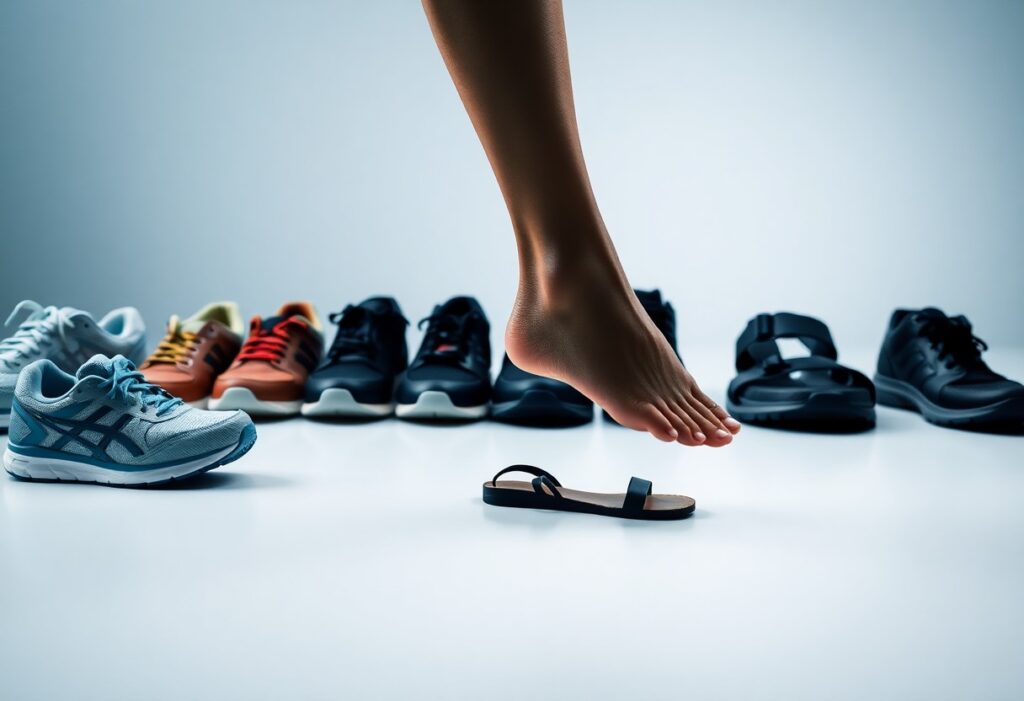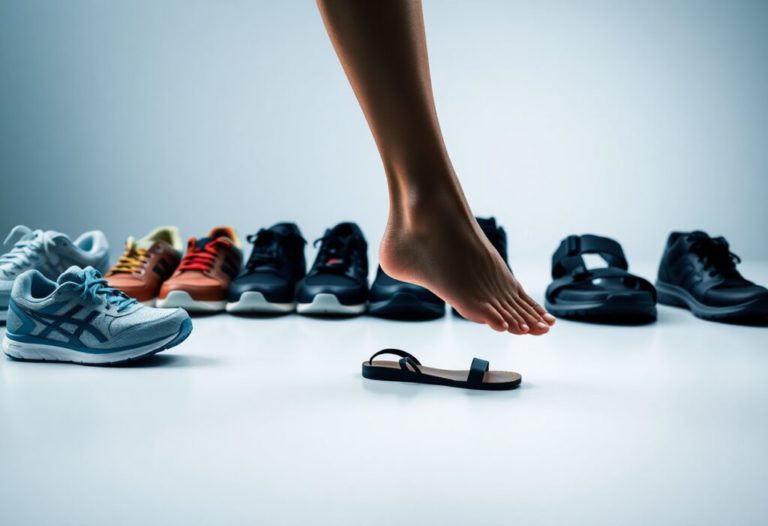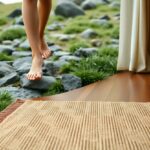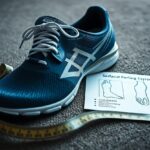
As you take each step, the choice of footwear you make can significantly improve or harm your overall foot health. Many individuals incorrectly believe that shoes boasting enhanced cushioning and support are the ultimate solution to foot discomfort. In reality, traditional shoe designs may aggravate existing problems instead of alleviating them. Dr. Alissa Kuizinas, a podiatrist based in Massachusetts, strongly advocates for the use of barefoot shoes or minimalist footwear, stating that these alternatives can promote stronger, healthier feet. By opting for shoes that enable your feet to function in their natural state, you can greatly lower the likelihood of developing foot issues and enhance your overall foot wellness.
Identifying the Underlying Issues with Conventional Footwear Choices
Although conventional shoes might seem to offer temporary relief from foot pain, they frequently exacerbate existing conditions and introduce new complications, as noted by Dr. Alissa Kuizinas. She highlights that the $133 billion footwear industry often prioritizes aesthetics and profit margins over true foot health, leading to designs that can constrict and weaken your feet over time. This dependency on traditional footwear can create a damaging cycle that ultimately undermines your foot health and overall well-being.
Examining the Footwear Industry’s Oversights on Foot Health
The crux of this dilemma lies in the footwear industry’s misguided approach to addressing foot health, which typically emphasizes incorporating excessive cushioning, support, and rigid construction into shoes without tackling the root causes of discomfort. This flawed methodology can foster a dependence on traditional shoes that may inadvertently harm your foot health over time, leading to a range of complications that could easily be avoided.
Recognizing the Flaws in Traditional Shoe Design
Traditional shoe designs often feature narrow toe boxes, stiff soles, and excessive cushioning that can hinder natural foot movement, resulting in weak and dysfunctional feet. Dr. Kuizinas emphasizes that footwear should shield your feet from environmental hazards rather than restrict their natural movement. The ideal shoe design should prioritize natural foot function and minimalist features, incorporating wide toe boxes, flexible flat soles, and minimal cushioning to encourage optimal foot health.
By embracing barefoot shoes or minimalist footwear, you can proactively fortify your feet and enhance your overall foot wellness. Dr. Kuizinas advocates for the philosophy of using the least amount of shoe necessary, allowing your feet to function naturally and move freely, which is crucial for maintaining healthy foot mechanics.
The Vital Role of Natural Foot Movement for Overall Health
Wearing shoes that limit your foot’s natural movement can result in a variety of foot problems and discomfort. It is essential to assess how your footwear choices affect your overall foot health and comfort levels, ensuring that you are making informed decisions for your feet.
Assessing the Impact of Shoe Design on Foot Mobility
To truly comprehend how footwear affects your foot’s mobility, it is essential to closely examine the specific design and features of your shoes. Traditional footwear often includes cushioning and support elements that can inadvertently impede your foot’s natural movement, leading to weak and dysfunctional feet over time. Such restrictions can prevent your feet from developing the strength and flexibility they need to thrive in everyday activities.
Exploring the Advantages of Allowing Natural Foot Mobility
Permitting your feet to move freely yields numerous benefits, as strong feet are fundamental to maintaining overall foot health. By opting for minimalistic shoes or barefoot footwear, you enable your feet to function naturally, which fosters strength and resilience. The freedom of movement is vital for developing strong feet. When confined by traditional footwear, you risk the onset of various foot issues and discomfort. Conversely, embracing minimalistic shoes or barefoot alternatives can significantly improve your foot health by promoting natural movement and strength-building.
By carefully selecting suitable footwear, you can lower your risk of developing foot complications and enhance your overall foot wellness.
Grasping the Principles of Functional Footwear for Optimal Health
Understanding functional footwear is crucial, as these shoes prioritize both foot health and natural movement. Functional footwear is designed specifically to allow your feet to perform as intended, eliminating the need for excessive support or confinement.
What Defines Functional Footwear: Essential Characteristics to Consider
Upon exploring various shoe styles, you will discover that functional footwear features unique characteristics, such as a wide toe box, flat and flexible soles, accompanied by minimal cushioning and support. These attributes enable your feet to move freely and naturally, promoting stronger and more efficient foot mechanics.
The Role of Functional Shoes in Promoting Optimal Foot Health
Wearing functional shoes offers numerous benefits, including enhanced foot strength, a decreased risk of injury, and improved overall foot health. These shoes enable your feet to function as they are designed, paving the way for stronger feet and better balance throughout your daily activities. Conceptually, functional footwear is crafted to support your feet without imposing unnecessary limitations, allowing for natural movement and flexibility.
This design philosophy fosters optimal foot health and minimizes the risk of developing foot ailments. By choosing functional shoes like barefoot shoes or minimalistic options, you actively promote healthy foot function and reduce the chances of foot pain and injury. Transitioning to functional footwear may require patience and gradual acclimatization, but the long-term benefits for your foot health are invaluable.
Identifying Essential Features of Functional Footwear for Maximum Comfort
To achieve the best outcome for your foot health, it is vital to seek shoes that incorporate specific features. The key attributes to consider include:
- Wide toe box
- Flat and flexible soles
- Minimal cushioning and support
Understanding these characteristics will significantly aid you in selecting shoes that promote healthy foot function and support.
The Importance of Wide Toe Boxes and Flexible Soles
An essential feature of functional footwear is a wide toe box, which allows your toes to spread naturally. This design reduces the likelihood of toe jamming and other discomfort-related issues that may lead to chronic foot pain.
The Relevance of Minimal Cushioning and Support
In addition to a wide toe box, functional shoes should also have minimal cushioning and support. This design encourages your feet to move naturally while strengthening foot muscles, thereby decreasing the risk of foot problems. It’s important to emphasize that minimalistic footwear, which includes barefoot shoes, can significantly enhance your foot health by allowing your feet to function freely.
By selecting shoes with minimal cushioning and support, you can strengthen the muscles in your feet and minimize the chances of injuries. This thoughtful approach not only enhances your overall foot health but also reduces the risk of experiencing chronic pain. Therefore, prioritize footwear that permits your feet to move naturally without excessive cushioning or support.
Successfully Transitioning to Functional Footwear for Enhanced Comfort
Having recognized the significance of functional footwear, it’s time to commence your transition. Contrary to the widespread belief that more cushioning equates to greater comfort, you should select minimalistic shoes or barefoot footwear that facilitate your feet’s natural functioning.
Practical Strategies for Transitioning to Functional Footwear
Despite any initial reservations, start integrating functional shoes into your daily routine with these practical strategies:
- Begin with short walks and progressively extend the distance
- Choose shoes featuring a wide toe box and flat soles
- Favor minimal cushioning and support
The key is to provide your feet with ample time to adapt to the new shoes while strengthening the muscles in your feet.
Understanding the Need for Patience During Your Transition
Transitioning to functional footwear necessitates patience and a gradual approach. Shoes that are overly minimalist may cause discomfort and pain if your feet are not accustomed to them. Starting slowly is vital, as it allows your feet to acclimatize to the new footwear.
Footwear options such as barefoot shoes or minimalistic shoes can be tremendously beneficial for your foot health, but it’s essential to introduce them gradually. Overuse or improper sizing can result in injuries or persistent discomfort. The ultimate goal is to strengthen your foot muscles while enhancing your overall foot health, so exercise patience and avoid rushing the process. The rewards will be substantial; expect to notice improved balance, reduced pain, and stronger feet as you progress.
Developing Strong and Functional Feet for Long-Term Health
Even in a culture that favors shoes with excessive cushioning and support, you can cultivate strong and functional feet by making informed footwear decisions.
The Connection Between Foot Strength and Overall Well-Being
In conjunction with other health aspects, foot strength is crucial for your holistic well-being, influencing your balance, posture, and movement capabilities.
How Functional Footwear Facilitates Stronger Feet
Functionally designed shoes that feature a wide toe box, flat and flexible soles, and minimal cushioning are essential for fostering strong feet, as they promote natural movement. Indeed, wearing functional shoes or barefoot shoes can significantly aid in building stronger foot muscles and enhancing your overall foot health.
By allowing your feet the freedom to move and function naturally, you can reduce the risk of foot issues and maximize your balance and stability. As you make the transition to minimalistic shoes, look forward to improvements in your walking technique and your overall sense of well-being.
By taking charge of your foot health, you can select footwear that enhances your feet’s natural functions instead of hindering them. Choosing barefoot shoes or minimalistic options that allow your feet to operate naturally will foster strength development over time. In doing so, you will experience increased stability and comfort during various activities, allowing your feet to grow stronger and more capable. Begin your journey by seeking shoes with a wide toe box, flat and flexible soles, and minimal cushioning and support, while practicing patience as you transition to a more natural walking style.
The Article A Podiatrist’s Guide to How Shoes Affect Your Foot Health appeared first on My Shoes Finder
The Article How Shoes Impact Your Foot Health: A Podiatrist’s Insights Was Found On https://limitsofstrategy.com









